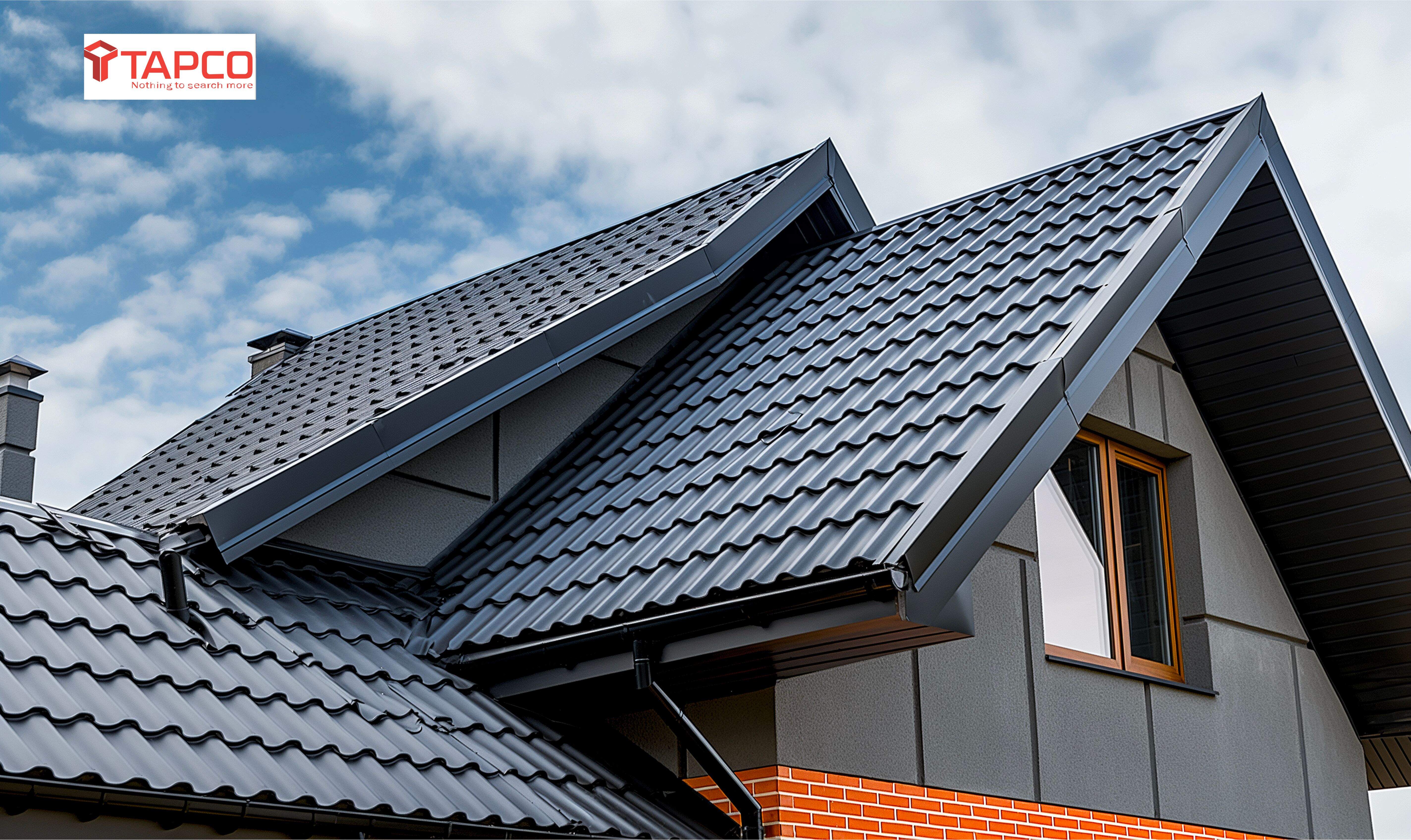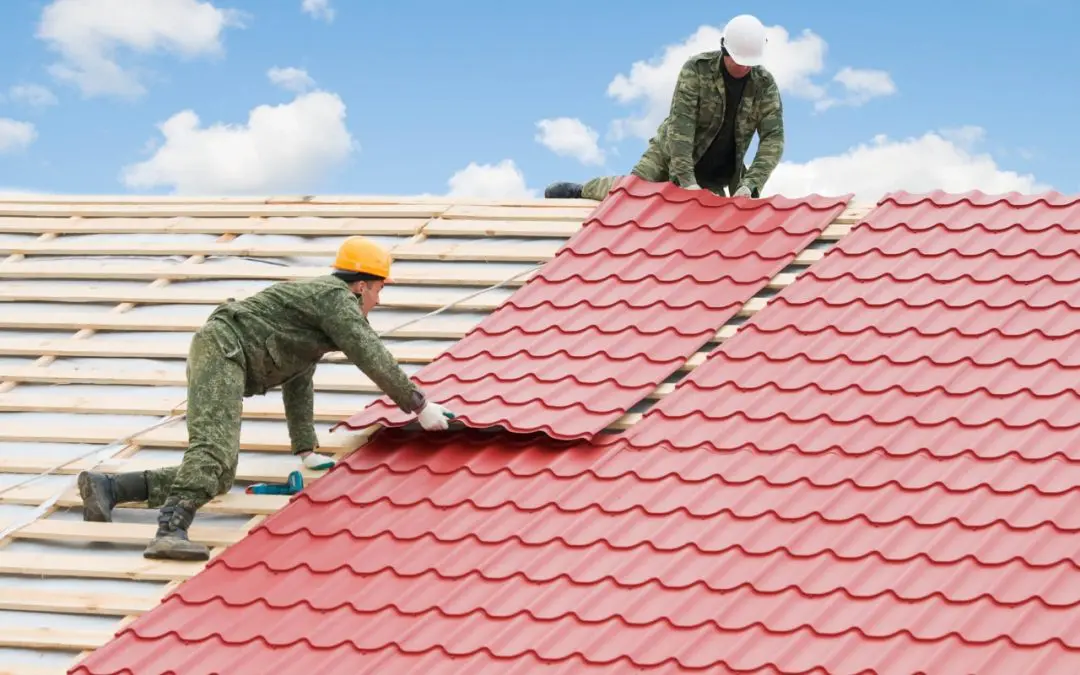A Comprehensive Overview to the Installment Refine for Your New Roof
The setup process for a new roof requires careful factor to consider of numerous variables. From evaluating the roof's architectural honesty to choosing suitable materials, each step plays an essential function in making certain a successful result. Comprehending the subtleties of setup can avoid future concerns and enhance longevity. What are the important actions one must follow to accomplish a dependable and durable roofing system? The solution lies in a methodical method that addresses every essential facet.
Comprehending Different Roofing Materials
When picking a roof, understanding different roof materials is crucial for making an informed choice. Different materials supply unique advantages and disadvantages, influencing durability, price, and appearances. Asphalt roof shingles are popular for their cost and ease of installment, making them a common selection for houses. Steel roof covering, recognized for its longevity and resistance to severe weather condition, appeals to those looking for toughness. Clay and concrete ceramic tiles provide an one-of-a-kind visual and excellent insulation however can be larger and more costly. Slate roof covering, commemorated for its natural charm and exceptional life expectancy, often tends to be a premium option needing skilled setup. For environmentally-conscious home owners, environment-friendly roofing systems, which integrate plants, existing lasting benefits. Comprehending these products permits home owners to straighten their choice with budget plan, environment factors to consider, and individual style choices, eventually guaranteeing a roof remedy that fulfills their demands properly.
Examining Your Roof's Structural Integrity

Reviewing a roof covering's architectural honesty is crucial for guaranteeing its longevity and security. This process includes evaluating the roofing system framework for any indicators of weakness, identifying prospective water damages, and establishing the lots ability to support various roof covering products. Attending to these elements will aid preserve the overall health of the roof covering system.
Inspecting Roof Covering Framework
Prior to setting up a new roof covering system, it is crucial to extensively inspect the roofing structure to confirm its architectural honesty. This process includes evaluating crucial components such as rafters, trusses, and the general structure design. A certified inspector must look for indications of wear, bending, or any architectural shortages that might jeopardize the brand-new roof installment. Furthermore, it is vital to look for appropriate load circulation, making sure that the structure can support the weight of the brand-new materials. Any type of determined problems need to be attended to before proceeding, as they can bring about significant problems down the line. By prioritizing this examination, homeowners can guarantee a long lasting and dependable roof that will endure the examination of time.
Recognizing Water Damages
Water damages can greatly impact a roofing's architectural integrity, making it vital to determine any kind of indicators early in the examination procedure. Property owners must seek staining or discolorations on walls and ceilings, which may show leakages. Sagging areas in the roof or ceilings suggest built up dampness that can compromise structural parts. Checking the attic is essential; mold development and damp insulation are indications of water invasion. Additionally, examining the roof surface area for missing shingles, cracks, or corrosion on metal components can disclose possible vulnerability to water damage. Normal analyses can assist in early discovery, permitting for prompt repairs that preserve the roof covering's integrity and prevent substantial damage. Dealing with these indications immediately is vital for preserving a long lasting and safe roof covering system.
Examining Lots Capacity
Reviewing the tons capability of a roof is vital for ensuring its structural stability and durability. This assessment entails analyzing the products utilized in the roofing system's construction, the underlying framework, and the general style. Variables such as snow accumulation, wind tons, and the weight of roof covering materials have to be taken into consideration to establish whether the structure can sustain added loads. An architectural designer can provide useful understandings, conducting computations based upon regional building codes and ecological problems. Normal evaluations and upkeep additionally play a crucial duty in identifying prospective weak points. By extensively evaluating load capability, home owners can prevent costly damages and ensure that their brand-new roof covering system is sturdy and secure for years to come.
Preparation and Preparing for Installation
Efficient planning and preparation are necessary steps before setting up a roof system - top rated roofing companies near me. This entails reviewing certain roof requirements and choosing the suitable materials that best fit those needs. A comprehensive understanding of these elements can significantly influence the success and longevity of the roof covering job
Examining Your Roof Demands
Exactly how can one guarantee that their roof task satisfies both aesthetic and functional needs? An extensive assessment of roofing needs is crucial. This includes examining the existing roofing's condition, recognizing any type of damage, and establishing structural integrity. House owners ought to consider their environment, as weather considerably influence roof covering product choices and durability. In addition, assessing building style and area looks is vital for maintaining residential or commercial property worth and appeal. Recognizing individual preferences and budget plan restraints more help in making informed decisions. Seeking advice from with roof professionals can provide beneficial insights and referrals tailored to details needs. By her comment is here diligently examining these elements, homeowners can assure their roofing job aligns with their special requirements and improves their residential or commercial property's overall look.
Selecting the Right Products
When choosing products for a roof task, it is necessary to think about both functionality and visual appeals to assure an effective installation. Homeowners must consider the environment of their region, as certain materials carry out much better under particular climate condition. For example, metal roofings use longevity in locations vulnerable to hefty snowfall, while asphalt roof shingles may be much more affordable for milder climates. Additionally, the style of the home plays a substantial function; materials should enhance the building design to enhance aesthetic charm. Sustainability is one more factor; environmentally friendly options like solar floor tiles or redeemed wood can reduce environmental effect. Eventually, selecting the appropriate products includes balancing these components to protect a resilient and visually enticing roof covering system.
Security Precautions During Installation
Ensuring safety and security throughout roofing system installation calls for careful interest to information and adherence to established protocols. Employees should don ideal individual protective tools (PPE), including headgears, handwear covers, and non-slip footwear, to lessen injury risks. Scaffolding and ladders need to be firmly positioned and kept to supply secure work surfaces. It is important to check the roofing framework for weaknesses or damage prior to beginning job, as this can prevent accidents later on.
Furthermore, installers need to be trained in fall defense methods, consisting of making use of guardrails and harnesses. Weather also play a look at these guys considerable duty; work should be postponed throughout high winds, rain, or storms. Furthermore, all materials and tools need to be organized and safeguarded to protect against tripping threats. By prioritizing these safety precautions, the threat of mishaps can be significantly minimized, ensuring a much safer working environment for all associated with the roof covering setup process.
Step-by-Step Setup Process
A successful roof installment involves a collection of very carefully planned steps that guarantee both efficiency and quality. The old roofing product need to be eliminated, making certain the underlying structure is undamaged. Next off, any kind of needed repairs to the roofing deck are carried out, strengthening its security. Following this, a dampness barrier is installed to safeguard against water seepage. The selection of roofing product, such as shingles or steel panels, is then laid out, starting from the eaves and proceeding upwards. Each piece is protected thoroughly to stand up to weather problems. Ventilation systems are incorporated to promote air movement and avoid moisture accumulation. Flashing is set up around smokeshafts and vents to more secure against leaks. The installment is examined for compliance with local building codes and maker requirements. This comprehensive strategy guarantees a long lasting and trustworthy roofing system that fulfills house owner expectations.
Ending Up Touches and Examinations

As soon as the installment of all parts is full, a thorough assessment complies with. This includes monitoring for appropriate positioning, safe and secure attachment, and sufficient securing of joints. Assessors additionally assess ventilation systems to ensure peak airflow and wetness monitoring.
Additionally, any debris or leftover materials from the installment should be removed from the roofing and bordering area. By diligently taking care of these details, house owners can assure that their brand-new roofing system is not just functional but likewise visually enticing, setting the stage for long-term efficiency and toughness.
Upkeep Tips for Your New Roof covering
While several homeowners might overlook the relevance of routine roofing upkeep, establishing a routine can substantially expand the life-span and performance of a brand-new roof covering system. Normal inspections need to be performed at least two times a year, preferably in spring and fall, to recognize any prospective problems early. Property owners ought to look for absent or loosened tiles, signs of wear, and particles build-up in valleys and seamless gutters.
Cleansing the roof covering surface and rain gutters is important to avoid water damage and mold and mildew development. Additionally, cutting looming branches can decrease wear and tear triggered by dropping particles. It is likewise a good idea to keep an eye on interior ceilings for indications of leaks or water spots, which might show roofing issues.
Engaging a professional for yearly evaluations assures that any underlying problems are attended to quickly, preserving the honesty of the roof system and supplying peace of mind for house owners.

Regularly Asked Inquiries
Exactly how Long Does the Roof Installation Process Typically Take?
The roofing installment process usually takes one to 3 days, relying on the job's dimension and complexity. Factors such as climate condition and the kind of browse around this site roofing material can also affect the overall timeline.
What Permits Are Needed for Roofing Installation?
The called for authorizations for roof covering setup usually consist of structure authorizations, structural licenses, and, in some areas, electrical or plumbing authorizations. Regulations might differ based upon neighborhood codes, requiring consultation with regional authorities for particular demands.
Can I Stay Home During the Installation?
Homeowners can stay throughout roof covering setup, but it may be inconvenient because of noise and disruptions. Professionals advise staying out of workplace for safety and to permit the staff to execute their tasks effectively.
Will My Insurance Cover the Roof Installation Prices?
Insurance policy coverage for roofing setup costs varies based upon individual policies and circumstances. House owners ought to consult their insurance service provider to determine eligibility for protection, including aspects like damage intensity and plan stipulations pertaining to roofing system replacement.
What Occurs if It Rains During Setup?
If it rains during setup, workers might halt development to stop damages to materials and guarantee safety and security. Rain can additionally postpone conclusion, requiring additional time for drying and prospective re-evaluation of the roofing task.
The installation process for a new roofing system requires mindful factor to consider of numerous aspects. When selecting a roof system, comprehending various roof products is essential for making a notified decision. When choosing products for a roofing job, it is necessary to take into account both capability and visual appeals to guarantee a successful installation. Guaranteeing security throughout roofing system setup requires precise focus to detail and adherence to established procedures. An effective roof covering system installation includes a collection of very carefully planned actions that ensure both efficiency and quality.